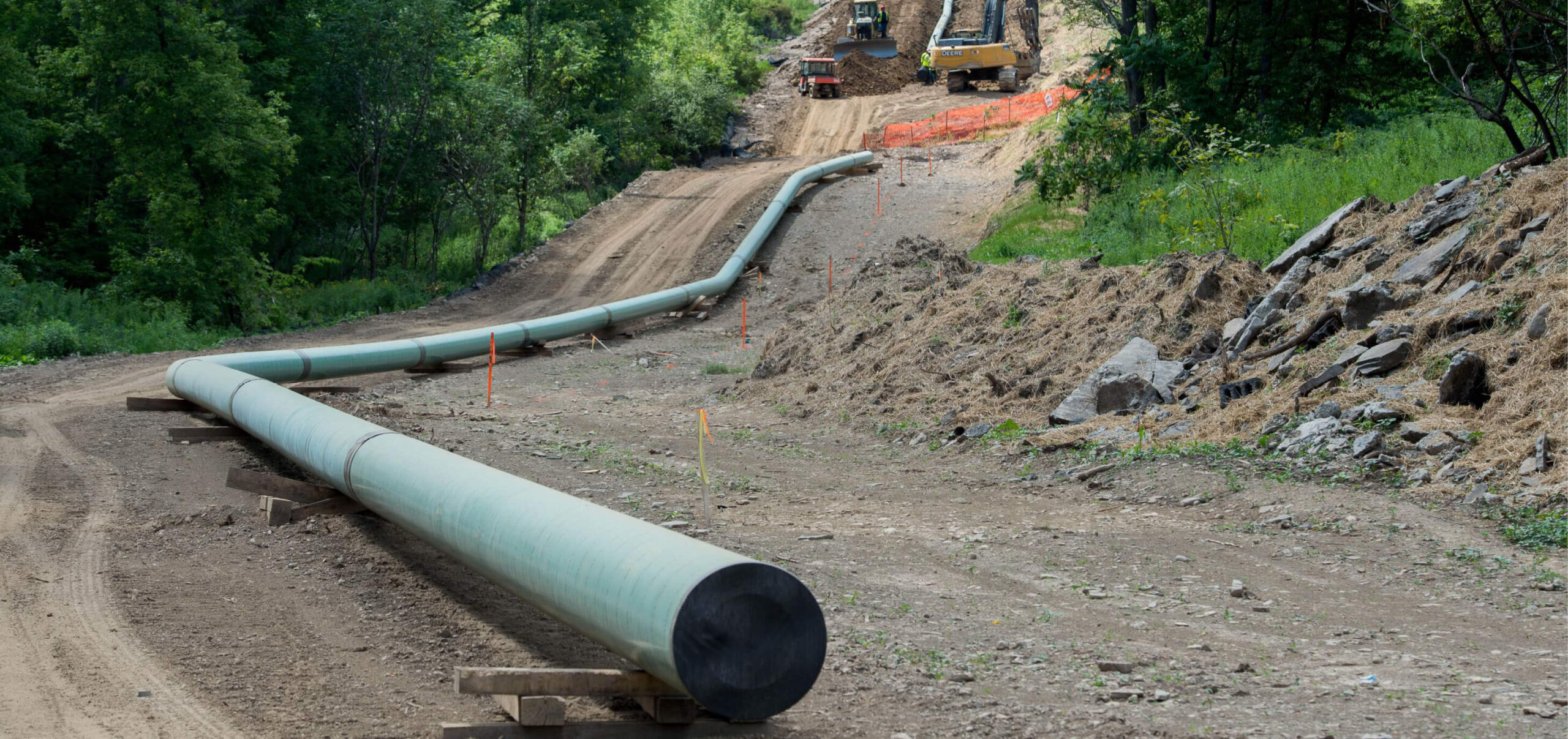
Are your polyethylene gas line horizontal directionally drilled (HDD) installations meeting the newest regulations?
By Fred Hanna, PE, GMC Energy Practice Leader
One year ago, the Pipeline and Hazardous Materials Safety Administration (PHMSA), Department of Transportation (DOT) amended the Federal Pipeline Safety Regulations that govern the use of plastic piping systems in the transportation of natural and other gas. The new rules improve safety, allow for expanded use of plastic pipe products, and allow or require the use of certain materials and practices in order to improve pipeline safety and integrity. The effective date of this rule was 1/22/2019. These are in response to progress in the design and materials used in the manufacture of plastic pipe and components used to transport natural and other gas products. Best practices in pipe installation have also changed as a result of using new stronger, materials. One of the changes includes the use of a weak link device or method during trenchless construction.
Weak Link Devices
Weak link devices (or break-away devices) limit the amount of force used when pulling polyethylene (PE) product pipes. The weak link device must be specified and sized to not exceed the specified pipe’s maximum tensile stresses allowed. Pipe manufacturers should provide a table for their specific pipe sizes, SDR, yield strength, temperature and pull duration adjustments. Weak link examples are provided only as a training aid and operators should conduct specific reviews of their approved materials, specifications, and methods. Operator plans and procedures should be reviewed and adjusted as necessary to assist in achieving compliance. Weak link device manufacturers can provide break load specifications, to be selected for use in the weak link and break away swivels.
Weak Link Methods
Some gas utilities address the weak link using methods in lieu of devices. A good example is the fusing of a smaller PE pipe diameter, of the same SDR, to create a weak link ahead of the pull-in pipe. When using smaller pipe of the same manufacturer specification and SDR, both stress and pull load calculations should be conducted and tabulated. This happens in order for the approved pipe sizes to assist the gas construction crews with sizes to use for the methods approach. GMC can assist with review, calculations and develop tabulations and charts for your plan. Other methods are also used by operators and all should be reviewed for compliance with 192.3 and 192.329.
How GMC Can Help
Trenchless construction using horizontal direction drilling (HDD) procedures and plans is one key area to review to ensure compliance with DOT 192.329. The effective date of this rule was 1/22/2019. A qualified engineer can prepare an HDD plan to determine pipe stresses during installation and operation, anticipate pull load requirements, and review pipe and material specifications for possible stress during installation on your specific application. GMC has qualified engineers familiar with the most current requirements and can provide overall plans and procedures as well as specific HDD plans. This bulletin is intended to assist gas operators in reviewing their compliance options and is not intended to recommend specific devices or methods. A best practice is to provide qualified gas construction crews and contractors an engineered HDD design including drill path geometry, drill path drawings, installation and operational stress calculations and materials specifications. GMC can provide this service for both PE and Steel HDD’s as well as assist in review of materials, specifications, plans and methods to ensure compliance and safety.
Assessment and Compliance
GMC suggests reviewing the following documents specific to each of the company’s gas operations to develop a compliance plan:
• Operator Approved Gas Operation, Construction and Operator Qualification Documents
• Operator Approved Pipe Specifications and Allowable Pull Load
• Operator Approved Weak Link Manufacturers Device Specifications and Pull Load Settings
• Operator Approved Methods and Stress Calculations to Determine Safe Pull Load
• Operator Trenchless and HDD Construction Methods and Standards
• Contractor Specifications for Trenchless Construction and HDD Construction
About GMC’s Energy Practice
GMC’s Integrated Engineering Services Approach provides natural gas pipeline, distribution and facility planners and operators an opportunity to reduce costs and schedules over their project lifecycles. This happens by integrating the required project disciplines in the planning phase of a project and throughout the project execution phase to achieve their project objectives. Safety, integrity and quality is the foundation of every GMC project undertaken and executed. GMC’s approach benefits gas operators by providing a platform to identify, mitigate and manage project risk factors. The Integrated Engineering Services Approach leverages best practices across project functional silos to provide coordination between critical key disciplines for successful project delivery.

About the Expert
Fred Hanna, PE, leads GMC’s Energy Practice. He has over 38 years of experience in natural gas engineering, management and consulting, including executive management of gas operations, engineering and customer service functions as an operator. He has successfully managed numerous integrated engineering services projects as a consultant to Fortune 500 Corporations, Private Municipal and Public Gas systems coordinating multiple engineering and environmental disciplines and sub consultants for pipeline and facilities projects.
References
https://www.federalregister.gov/d/2018-24925/p-3
https://www.federalregister.gov/d/2018-24925/p-20
https://www.federalregister.gov/d/2018-24925/p-129
https://www.federalregister.gov/d/2018-24925/p-136